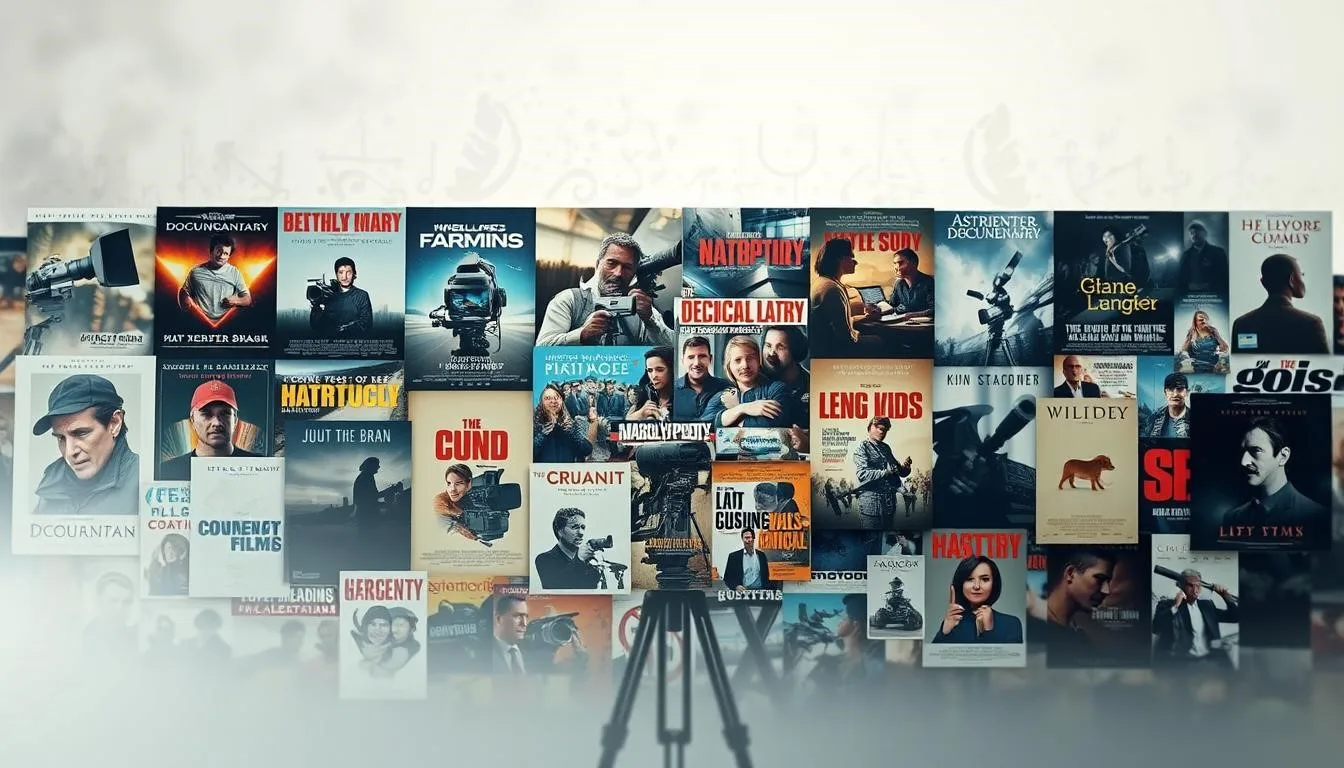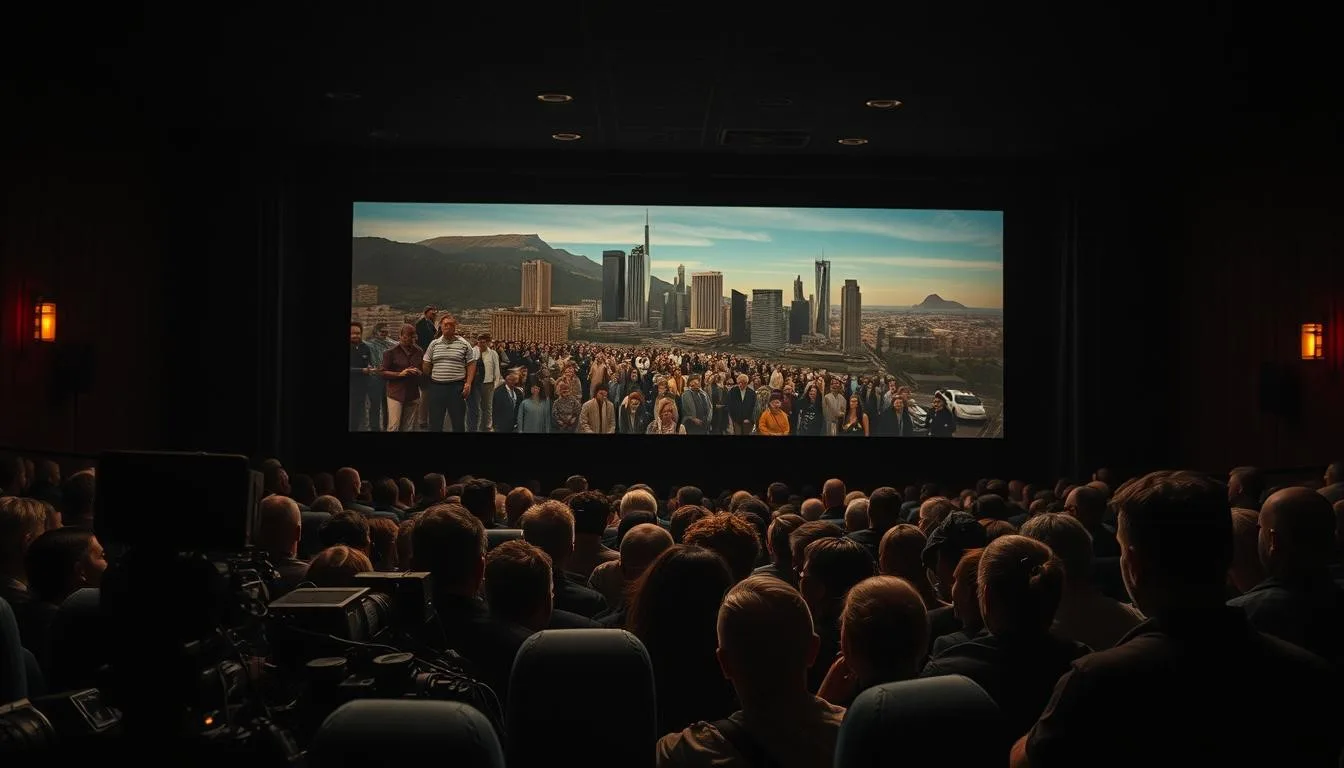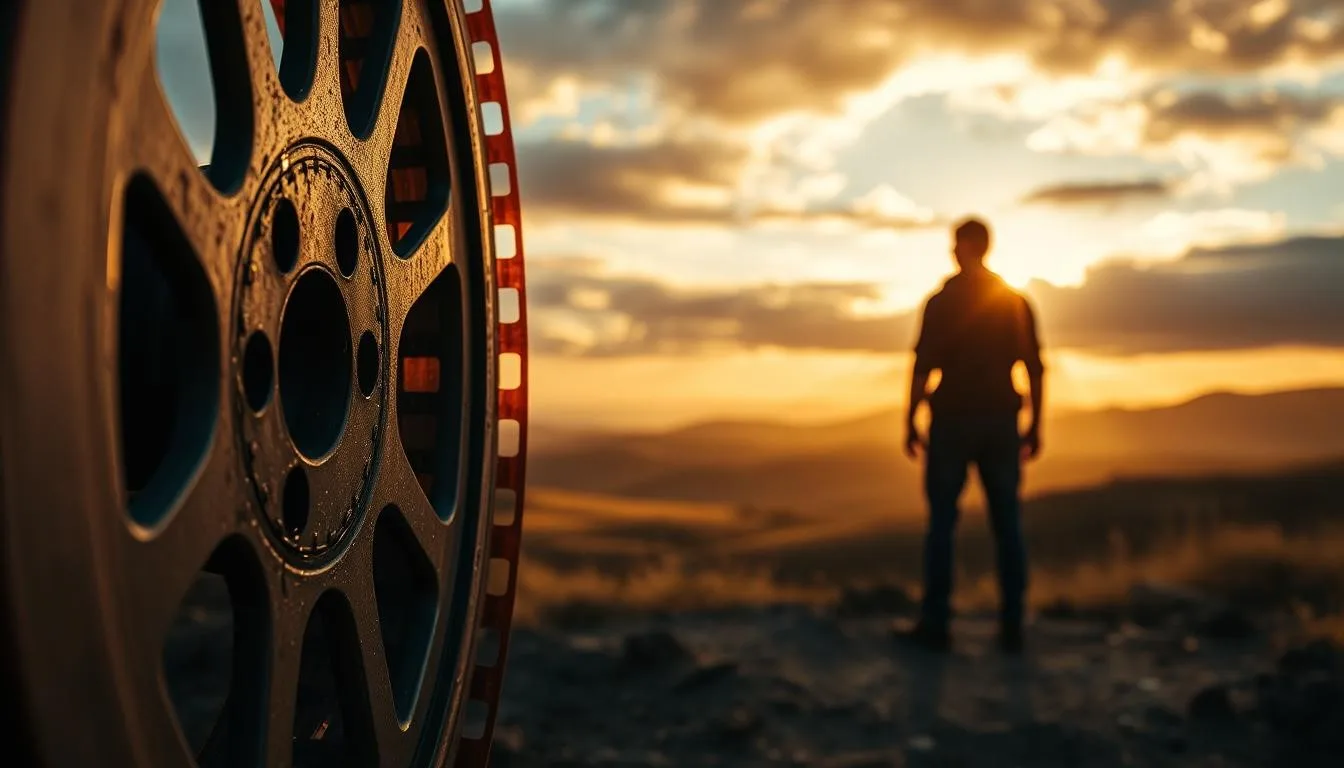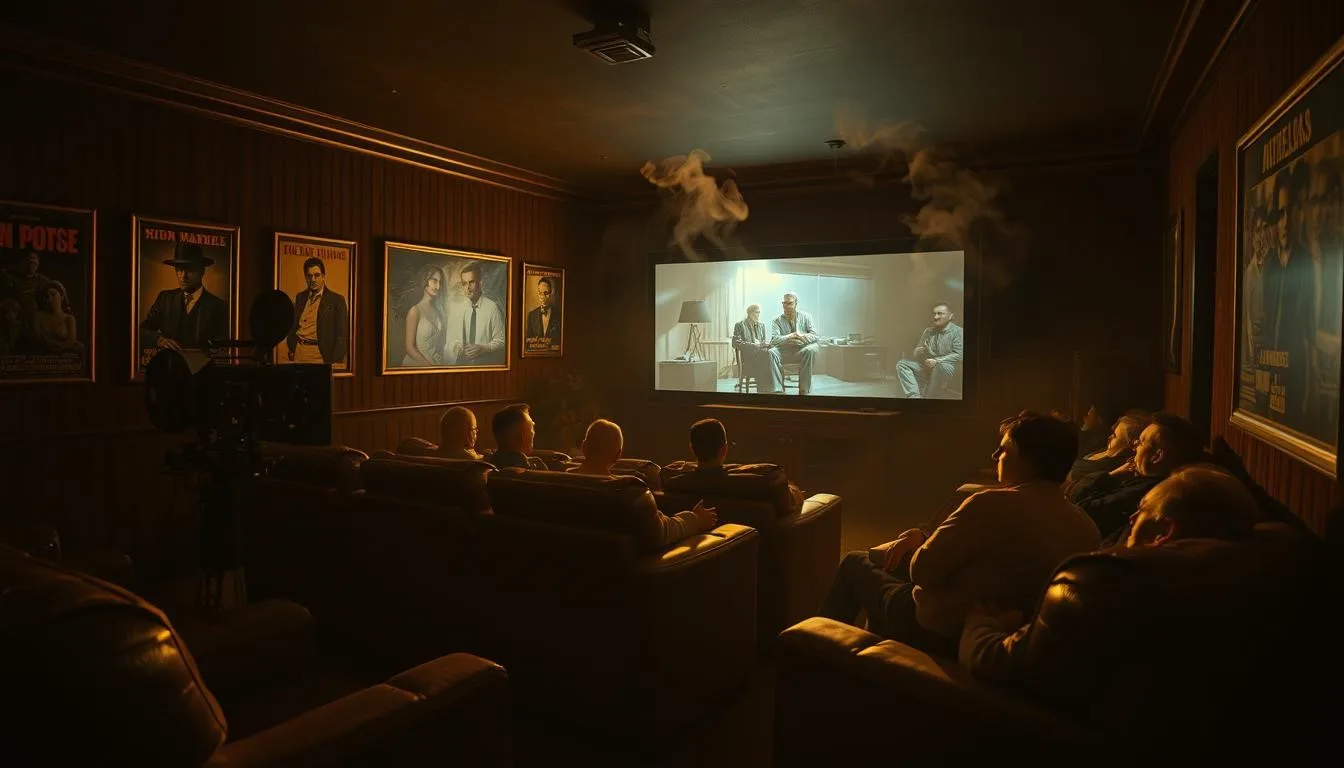The Best Documentaries of All Time: Our Choices
In 2018, a university student in Leeds stumbled upon a dusty DVD titled Man with a Movie Camera at a charity shop. What began as a casual viewing turned into a late-night obsession. By sunrise, they’d scribbled notes about Soviet-era film techniques and the power of non-fiction storytelling. This accidental discovery mirrors how documentaries often reveal hidden worlds, sparking curiosity in unexpected ways.

Non-fiction cinema has evolved far beyond its early role as an educational tool. Today, it challenges perceptions, drives social movements, and crafts narratives as gripping as any fictional drama. From intimate biographical portraits to hard-hitting environmental exposés, these works blend artistry with real-world impact.
Our curated selection prioritises films that reshaped public discourse or pioneered new storytelling methods. Whether exploring systemic injustices or celebrating human resilience, each entry demonstrates how truth can be stranger – and more compelling – than fiction.
Key Takeaways
- Documentaries span diverse subgenres, including social justice investigations and artistic explorations
- Many influential works have directly shaped public opinion and policy changes
- The genre has evolved from straightforward reporting to innovative narrative formats
- Critical acclaim often aligns with a film’s cultural staying power
- Impactful non-fiction cinema balances factual rigour with emotional resonance
- British filmmakers have contributed significantly to the documentary tradition
Introduction to the World of Documentaries
During the 2020 lockdown, many turned to non-fiction films to make sense of a rapidly changing world. These works became windows into unfamiliar realities, blending education with visceral storytelling. Unlike traditional cinema, they often ask viewers to question rather than escape.

Contemporary non-fiction filmmaking employs techniques borrowed from drama and journalism. Directors might use:
- Cinematic re-enactments to reconstruct historical events
- Personal diaries for intimate narratives
- Interactive elements breaking the fourth wall
The genre’s power lies in its flexibility. A wildlife conservation piece can grip audiences like a thriller, while a biographical portrait might unfold with the pacing of a novel. This artistic evolution has transformed documentaries into cultural touchstones, sparking pub debates and parliamentary discussions alike.
Advances in affordable filming gear have revolutionised access. Today’s creators range from war reporters to teenagers with smartphones, capturing stories that mainstream media overlooks. As one Bristol-based director noted: “Truth isn’t always pretty, but it’s always worth framing.”
These films don’t just document life – they shape how societies remember and respond to it. From exposing injustices to celebrating unsung heroes, they turn individual experiences into shared cultural moments.
Defining Impact and Influence in Documentary Filmmaking
When a groundbreaking documentary premieres, its ripples often extend far beyond cinema screens. True influence lies in a film’s capacity to alter perspectives, challenge norms, and leave lasting imprints on culture. Consider how some works have reshaped legislation or become reference points in academic curricula.

Impact measurement goes deeper than awards or viewer numbers. Key indicators include:
- Shifts in public dialogue about societal issues
- Tangible policy reforms following a film’s release
- Sustained relevance across decades
Take the 1970s ecological warnings that feel eerily prescient today. These works gain power through their ability to frame urgent debates in human terms. A Bristol-based campaigner recently noted: “The right documentary at the right moment can turn whispers into megaphones.”
Longevity separates fleeting trends from truly influential pieces. Films addressing systemic racism or climate crises often see renewed attention during related current events. Their narratives become tools for educators and activists alike.
The most effective works balance rigorous research with emotional resonance. They transform dry statistics into relatable stories without compromising factual accuracy. This approach not only engages audiences but inspires subsequent filmmakers to tackle complex subjects with equal rigour.
Exploring the Best Documentaries of All Time
In a Manchester cinema last autumn, viewers sat stunned as credits rolled on a 1973 ecological warning that predicted modern climate debates. This visceral reaction underscores why certain non-fiction works become cultural landmarks. The films discussed here represent defining moments in cinematic history, where craft and message merged to create enduring legacies.

What elevates these works beyond mere recordings of reality? Three elements stand out:
- Pioneering visual language that redefined film grammar
- Narrative structures blending journalistic rigour with poetic sensibility
- Subjects that hold up a mirror to society’s evolving concerns
From Thames Valley’s industrial decline to Amazonian deforestation battles, the selection showcases how film-makers transform specific moments into universal statements. A 1980s portrait of Welsh miners, for instance, gains new resonance during current energy crises.
Innovation often emerges through constraints. One director famously quipped: “Limitations breed creativity – our battered 16mm camera forced us to look harder at every frame.” This meticulous approach birthed techniques now standard in modern documentary-making.
Though decades might separate these works, their power lies in making audiences re-examine their world through fresh eyes. They prove that truth, when framed with artistry, becomes timeless.
Spotlight on Revolutionary Documentaries
In 1982, a film without dialogue or plot transformed how audiences perceive urban life. Koyaanisqatsi‘s mesmerising time-lapse sequences of cities and nature created a visual poem about ecological imbalance. This bold approach redefined what non-fiction cinema could achieve – proving stories don’t need words to resonate.
Groundbreaking Stories and Perspectives
Some films crack open cultural vaults society prefers locked. Paris is Burning spent seven years documenting New York’s ballroom scene, revealing LGBTQ+ communities crafting resilience through voguing and chosen families. Its unflinching portrayal challenged mainstream perceptions of gender and race, giving marginalised voices centre stage.
Innovative Filmmaking Techniques
Revolutionary works often ditch traditional templates. The absence of narration in Koyaanisqatsi forces viewers to interpret Philip Glass’s score against shifting landscapes. This experiential approach turns spectators into active participants, decoding meaning through rhythm and contrast rather than spoon-fed explanations.
Such films prioritise emotional truth over factual recitals. By abandoning interviews or voiceovers, they create space for raw, unfiltered connection. As one cinematographer noted: “When you remove the scaffolding of conventional storytelling, reality stands naked – and that’s when it speaks loudest.”
The Role of Documentaries in Social Activism
In 2016, a London book club’s screening of 13th sparked heated debates that lasted until midnight. This visceral reaction exemplifies how activist documentaries turn complex issues into urgent conversations. Non-fiction films have become catalysts for change, translating policy debates into human stories that demand engagement.
Influential Activism Documentaries
Ava DuVernay’s 13th dissects America’s prison-industrial system through historical patterns still shaping racial inequality today. Similarly, An Inconvenient Truth transformed climate science into a gripping narrative, spurring school curriculums and renewable energy policies. These works prove that films can:
- Expose systemic failures through personal testimonies
- Convert data into emotionally resonant visuals
- Create blueprints for grassroots movements
Highlighting Social and Political Issues
Activist film-making thrives when balancing revelation with solutions. As one Bristol-based campaigner observed: “The best works don’t just shout about problems – they hand viewers a megaphone.” Environmental documentaries now often include QR codes linking to local clean-up initiatives, bridging awareness with action.
This approach humanises abstract concepts. Footage of melting glaciers gains power when paired with interviews from displaced Arctic communities. Such storytelling makes global crises feel immediate, transforming passive viewers into informed advocates.
Documentaries That Shaped Public Opinion
When Michael Moore’s Bowling for Columbine premiered in 2002, it didn’t just dissect America’s gun culture – it became a battering ram against political complacency. The film’s blend of dark humour and chilling statistics sparked global debates about firearm legislation, proving documentaries could sway public sentiment as effectively as front-page headlines.
Moore’s confrontational style turns cameras into crowbars, prying open systemic issues others ignore. His approach demonstrates how documentary makers can function as public advocates, framing complex debates through personal stories and provocative interviews. As one Westminster researcher noted: “These films don’t just report the news – they become part of the conversation that changes it.”
The most impactful works often emerge during cultural flashpoints. By combining rigorous investigation with emotional storytelling, they transform abstract policies into human dramas. Audiences remember not just facts, but how those facts made them feel – a potent recipe for lasting influence.
Years after release, such documentaries remain reference points in academic courses and policy discussions. Their power lies in sustaining relevance, inviting new generations to re-examine entrenched societal issues through freshly critical lenses.
Artistic Expression and Life Narratives in Film
When Laura Poitras collected her Golden Lion at Venice Film Festival for All the Beauty and the Bloodshed, she dedicated it to “artists who turn personal pain into political power”. This ethos drives biographical films that intertwine creative vision with raw human experience, framing lives as both intimate journeys and cultural commentaries.
Visual Storytelling and Emotional Impact
Poitras’ 2022 work about photographer Nan Goldin masterfully weaves her haunting portraits into the opioid crisis narrative. Similarly, Amy (2015) uses Winehouse’s own lyrics as tragic foreshadowing. These films don’t just show art – they let it breathe through the storytelling itself.
Biographical and Personal Journeys
The finest artist portraits reject simplistic hero worship. Asif Kapadia’s treatment of Winehouse reveals how media vampirism and personal demons collided with her genius. Goldin’s activism becomes inseparable from her photography, proving how trauma can fuel both destruction and creation.
Such films expose the cost of brilliance. A Bristol-based director notes: “True artistry isn’t about perfection – it’s about the cracks where light gets in.” By framing lives as battlegrounds between talent and circumstance, these works remind us that every masterpiece has human fingerprints on its canvas.
Celebrated Documentaries at Film Festivals
Film festivals act as cultural seismographs, detecting stories that mainstream cinema often misses. These events transform hidden truths into shared experiences, offering creators a vital platform to challenge conventions. For non-fiction works, festival exposure can mean the difference between obscurity and global impact.
Recent festival standouts demonstrate this power. Sugarcane (2024) confronts Canada’s residential school legacy through survivor testimonies, prioritising indigenous perspectives over exploitative storytelling. Similarly, To Kill a Tiger (2022) earned a 2024 Oscar nomination by blending intimate family struggles with broader social commentary.
Three key benefits emerge from festival success:
- Industry recognition that unlocks distribution deals
- Funding opportunities for future projects
- Audience-building through critical acclaim
An Oscar nod often propels documentaries beyond niche circles. Time (2020), despite its modest budget, gained traction after its Academy nomination – its exploration of mass incarceration resonating with international viewers. As one programmer at Sheffield DocFest noted: “Festivals don’t just showcase films – they amplify voices society needs to hear.”
This ecosystem sustains non-fiction cinema’s evolution. By connecting bold works with engaged audiences, festivals ensure challenging stories find their place in cultural conversations.
Behind the Lenses: Filmmakers’ Vision and Approach
In 2023, amidst the rubble of Mariupol, AP journalists filmed history while dodging artillery fire. Their 20 Days in Mariupol demonstrates embedded journalism’s raw power – cameras becoming both shields and truth-tellers. The footage captures collapsing hospitals and defiant survivors, its urgency amplified by film-makers living alongside their subjects.
Contrast this with Craig Foster’s approach in My Octopus Teacher. Over 365 days, he documented a cephalopod’s life through daily dives near Cape Town. This patient observation reveals animal intelligence most nature programmes miss. As Foster noted: “You can’t rush trust – the camera only sees what the subject allows.”
Modern documentarians choose tools to match their mission. Lightweight 4K cameras now capture crisp footage in bomb shelters or ocean depths. Yet technology means little without human connection. The best works emerge when film-makers share their subjects’ worlds – whether through months of interviews or years building rapport.
Ethical considerations shape every decision. Editors sift hundreds of hours of footage, balancing truth with dignity. A Bristol-based director explains: “Our cuts must honour reality’s complexity, not simplify it for clicks.” This delicate approach transforms chaotic raw material into narratives that educate and unsettle in equal measure.
Stories of Triumph and Resilience on Screen
As dawn broke over Yosemite’s El Capitan in 2018, a camera crew held its breath while filming history. Alex Honnold’s rope-free ascent in Free Solo wasn’t just athletic prowess – it laid bare the psychological tightrope between focus and fatal error. Meanwhile, Sibil Fox Richardson’s 21-year battle to reunite her family, captured in Time, redefined resilience as sustained defiance against systemic injustice.
These works reject simplistic underdog narratives. Honnold’s preparation reveals obsessive ritualisation of danger, while Richardson’s campaign shows how hope curdles into exhaustion. As the director of Time noted: “True perseverance isn’t photogenic – it’s waking up each morning choosing struggle over surrender.”
The finest triumph stories balance vulnerability with resolve. Crews spent 700 days filming Honnold’s climb, mirroring his gruelling process. Richardson’s home videos, spanning decades, transform private anguish into collective reckoning with mass incarceration.
Such documentaries avoid tidy resolutions. Instead, they honour the messy reality of human endurance – where small victories coexist with lingering scars. Their power lies not in manufactured inspiration, but in unflinching portraits of life’s hardest climbs.
The Evolution of Documentary Filmmaking Over the Decades
Over six decades, non-fiction cinema has shed its skin repeatedly. Mikhail Romm’s Triumph Over Violence (1965) dissected fascism’s rise through chilling archival footage, while Chris Marker’s Sans Soleil (1983) pondered existence via fragmented memories. These works bookend a radical shift – from straightforward lectures to layered artistic statements.
Early documentaries often served as educational tools or propaganda. By the 1980s, creators began treating reality as raw material for experimentation. Marker’s abstract meditation on memory demonstrated how the form could challenge viewers intellectually while stirring emotions.
The genre’s journey mirrors societal changes. Post-war works prioritised historical documentation, later giving way to personal perspectives. Modern makers blend investigative rigour with poetic visuals, proving facts gain power through creative framing.
This evolution continues today. New technologies and cultural shifts ensure documentary remains a mirror held up to each generation’s anxieties and aspirations. Its history shows truth-telling adapts endlessly – always finding fresh ways to captivate and provoke.
FAQ
How have documentaries influenced social activism?
Films like Ava DuVernay’s 13th or Laura Poitras’s Citizenfour use interviews and archival footage to expose systemic issues, such as mass incarceration or government surveillance. These works often spark public discourse and drive policy changes by framing complex topics through personal narratives.
Which documentaries employ innovative filmmaking techniques?
James Marsh’s Man on Wire blends re-enactments with real footage to recreate Philippe Petit’s tightrope walk, while Davis Guggenheim’s An Inconvenient Truth uses data visualisation to communicate climate science. Such approaches redefine storytelling in non-fiction cinema.
What role do film festivals play in documentary recognition?
Events like Sundance and Cannes showcase groundbreaking works, such as Asif Kapadia’s Amy, which explores Amy Winehouse’s life through unseen footage. Festivals amplify voices that challenge mainstream narratives, offering platforms for underrepresented stories.
How have documentaries shaped public opinion on historical events?
Michael Moore’s Bowling for Columbine critiques US gun culture through a mix of satire and investigative journalism, influencing debates on firearm legislation. Similarly, The Act of Killing confronts perpetrators of genocide, forcing audiences to reckon with historical atrocities.
What defines a biographical documentary’s emotional impact?
Films like Liz Garbus’s What Happened, Miss Simone? use intimate interviews and live performances to depict Nina Simone’s struggles with race and mental health. This approach humanises icons, connecting their artistry to personal resilience.
How has documentary filmmaking evolved over decades?
Early works relied on observational styles, while modern films like Summer of Soul incorporate multimedia elements. Advances in technology allow deeper exploration of themes, from the prison-industrial complex to cultural movements like Black Power.
